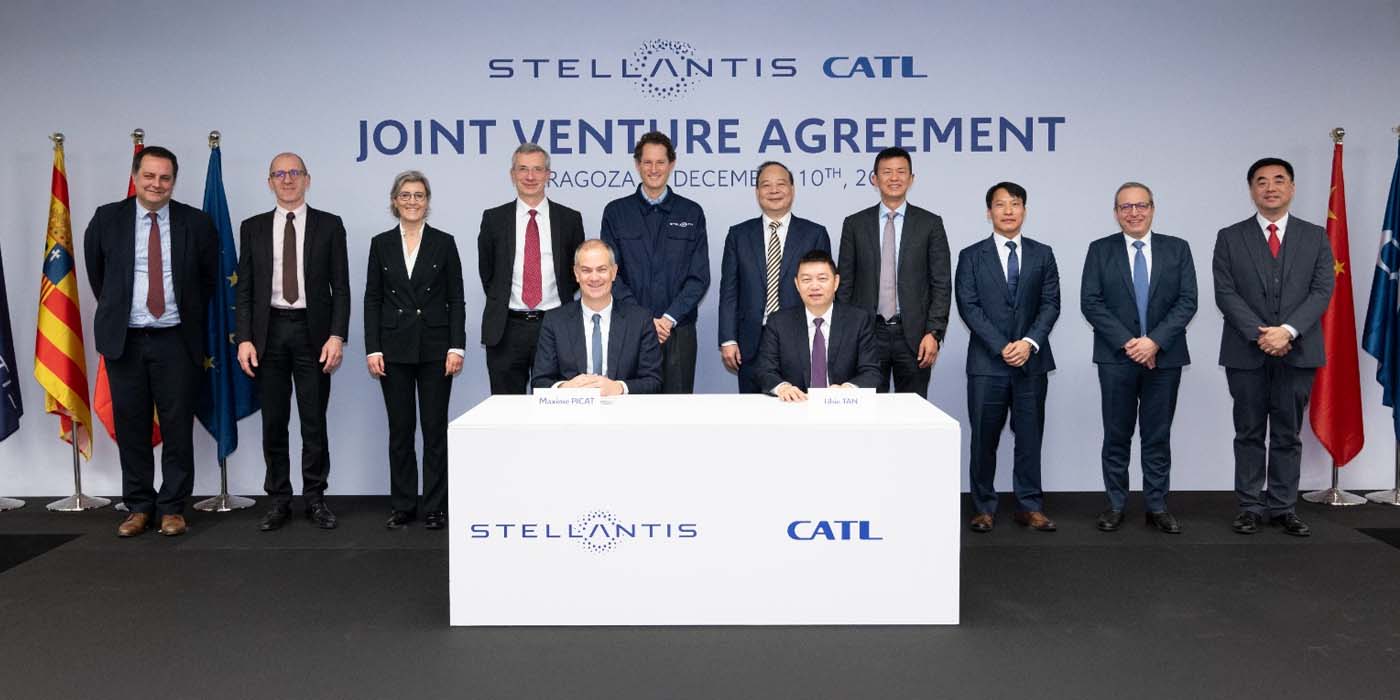European OEM Stellantis has announced a new joint venture with the world's largest battery manufacturer CATL, to build a large lithium iron phosphate (LFP) battery plant at one of its existing manufacturing sites.
Today's announcement of the joint venture between Stellantis and CATL builds on the Memorandum of Understanding (MoU) signed by both companies in the fall of 2023. At that time, we reported that the MoU marked the first comprehensive collaboration with China's EV battery major CATL. detailed the development and procurement of LFP batteries that will power small and medium manufacturer EVs sold in Europe.
As part of a long-term agreement, Stellantis – the parent company of Jeep, Fiat, Citreön, Peugeot, and others said it will build a new gigafactory in Europe to help the manufacturer of CATL said LPF batteries – the most popular chemistry in Europe. the EV industry as they are cheaper to produce and enable OEMs to pass those savings on to consumers in the form of smaller, more affordable models.
Just over a year later, Stellantis and CATL have finalized their proposed joint venture and will pool funds to build an LFP battery plant in Spain with an annual capacity of 50 GWh.

Stellantis and CATL make up to €4.1 billion in the LFP industry
Stellantis and CATL published a joint press release today, confirming a joint venture agreement in which they will invest up to 4.1 billion euros to build an LFP production facility at Stellantis' existing production facility in Zaragoza, Spain.
According to the new partners, the new LFP battery plant will be completely neutral and will be built with an investment plan in several stages. Stellantis chairman John Elkann elaborated:
Stellantis is committed to a clean future, incorporating all the advanced battery technologies available to deliver competitive electric vehicle products to our customers. This significant joint venture with our partner CATL will bring new battery production to a manufacturing facility that is already at the forefront of clean and renewable energy, helping to drive a 360-degree sustainability approach. I want to thank all the stakeholders involved in making today's announcement a reality, including the Spanish authorities for their continued support.
The 50/50 joint venture between Stellantis and CATL aims to start production of LFP cells by the end of 2026. It can reach an annual capacity of 50 GWh, “depending on the evolution of the electricity market in Europe and the continued support from the Spanish authorities. and the European Union.”
Stellantis said its partnership with a battery leader like CATL will enable it to use LFP battery technology in its crossover and SUV BEVs in the B and C segments, which will be durable and affordable in the “middle range.” CATL chairman and CEO Robin Zheng also addressed the JV with Stellantis:
Our joint venture with Stellantis has reached a high level, and I believe that our high-quality battery technology and outstanding know-how combined with Stellantis' long experience in doing business in Zaragoza will ensure a great success story in the industry. CATL's mission is to make zero-carbon technology accessible to the world, and we look forward to collaborating with our partners around the world on innovative collaboration models.
When production begins, the Spanish site will be CATL's third battery plant in Europe, joining existing operations in Germany and Hungary and other global leads in the works. CATL's LFP batteries will give Stellantis a dual chemistry approach as it already sells BEVs with lithium-ion nickel manganese cobalt (NMC) cells. The new facility is also part of the automaker's plans to become net zero carbon neutral by 2038.
The joint venture is expected to be completed sometime in 2025.
FTC: We use auto affiliate links to earn income. More.